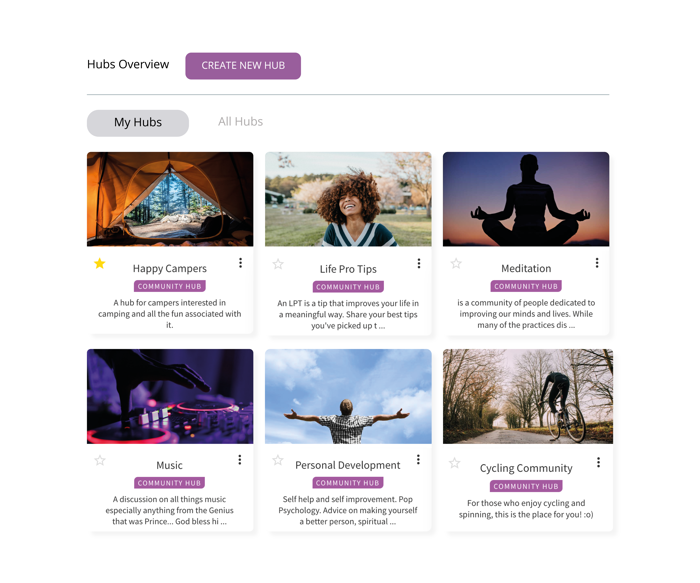While employee engagement can have a positive impact on productivity, profit and performance, most employee engagement strategies are falling short of their goals.
According to Gallup’s State of the Global Workplace, only 15 percent of employees are engaged in the workplace.
Even Gallup, the leading advocate, admits that employee engagement has barely budged in years.
So why are so many companies so ineffective at boosting employee engagement?
In this blog we’ll cover:
- What is Employee Engagement?
- Why do Employee Engagement Plans Fail?
- What can you do about it?
What Is Employee Engagement?
Employee engagement is the emotional commitment the employee has towards the organisation and its goals.
This emotional commitment means engaged employees actually care about their work and their company. They don't work just for the pay, but work on behalf of the organisation's goals, ultimately creating more success for the company.
It’s important to note that employee engagement is different from employee satisfaction. A satisfied employee will not necessarily put in extra time and effort into their company’s success, they are more likely to just get the job done with no extra effort.
Why Is It Important?
Research shows that 92% of business executives believe that engaged employees perform better, boosting the success of their teams and the outcomes of their business.

Sounds great, right?
Well improving employee engagement is vital to any business, regardless of size or financial standing.
In fact, your employees are vital to the success of your business.
Whilst many companies may view their products as their biggest asset, they're failing to notice that their people are what make their cogs turn.
Companies that value their employees will reap the rewards of a dedicated, passionate and skilled workforce.
However, those that fail to nurture and reward their staff won’t get the most out of their people, regardless of how talented they might be.
The benefits of employee engagement simply can’t be overlooked – employee engagement has been proven to:
- Reduce staff turnover
- Improve productivity and efficiency
- Increase employee retention
- Deliver higher profits
- Boost business connectivity and performance
- Reduction in absenteeism
Having an engaged team makes a business easier to run, and enables management to focus on activities that deliver higher value, such as innovation, process improvement and development.
In a nutshell, this is why employee engagement is so important to business outcomes and success.
Wondering how much revenue you could save per year with an engaged workforce?
Download your calculator below to discover how having an engaged workforce can save you money.
Now, let’s take a look at the 5 most common reasons why employee engagement plans fail.
Why Do Employee Engagement Plans Fail?
Are you doing things for your employees that you think will work, but you’re not seeing any results?
While the intent may be good, employee engagement approaches and methods often fail when the necessary foundation of trust does not exist.
The trust is based on employee perception and is a key component to understanding and driving engagement within an organisation.
Employee engagement can impact a company’s performance, employee’s behaviors and customer satisfaction.
Awareness of the unintended result and how each factor can lower employee engagement, or even lead to employee dissatisfaction, guides us to a better understanding of what we should and should not do.
This opens the door to creating a culture for engagement and allows an organisation to truly realise the benefits.
So, let’s take a look at the 5 main reasons employee engagement plans fail:
1. Lack of Communication
All organisations have set goals and mission statements with a strategized way to achieve success.
But, most of the time these are not communicated properly with employees.
Often HR sparks employee engagement by relaying what's driving the company's purpose during the onboarding process. Most of the time, that's the last time a new employee hears about it.
Consequently, the lack of communication leads to failure in employee engagement. No one wants to be blamed for something that they were not informed of properly.

Recommended Reading 📖: Business Communication: The Complete Guide
2. Not Listening to Employees
Engaged employees will communicate their concerns and goals to managers or leadership. Not listening to what they have to say is a certain way to lose that engagement.
Even if you have a great employee engagement plan in place, if you don't listen to the feedback of your employees, they will start to look elsewhere, ultimately affecting your employee retention.
According to the State Of The Global Workplace report, businesses with actively engaged employees see an 18% decrease in staff turnover. While it’s impossible to bring your employee retention to 100%, it’s certainly possible to create a loyal workforce where your people stay with your organisation for a prolonged time period.

More often than not, this problem occurs when a manager who doesn't have time for - or fails to see the value of - one-to-one meetings.
3. No Sense of Company Culture
Employee engagement goes beyond how workers relate to each other.
Of course, employees can socialise after work, but that doesn't mean they are putting their hearts and souls into their jobs the rest of the time.
A company culture must include the connection employees have with each other as well as the connection they have to their work, customers, and to their place within the organisation.
Workers don’t need to enjoy a drink together to be engaged, but employees without any sense of company culture wont seek co-workers for help and support when needed.
Recommended Reading 📖: Company Culture: The Ultimate Guide
4. Generalised Recognition
Even though the intent of the recognition may be to tell the entire team what a good job they did, when recognition is blanketed across the team, employees don't feel recognised for over performing as an individual.
The lack of differentiation promotes the idea that management doesn't really understand what the team does and doesn't have an awareness as to who worked on what.
This generalised recognition is less meaningful and it will certainly cause lesser motivation for going above and beyond.
5. Static Approach
In most organisations, engagement is measured far too infrequently to be useful.
Measuring work every year or even every quarter is way too infrequent to enable effective change.
The employer must frequently keep a check on the worker and engagement strategies in an organisation. So if there is a need for improvisation, it can be done at the right time.
Unfortunately this doesn't happen in most organisations, causing the disconnect between employees.
What Can You Do About It?
Now you know the reasons why employee engagement plans fail, let’s take a look at some approaches on what you can do to fix them.
Improve Ways of Communicating
A cloud based intranet software is essential to connect the modern workforce.
Since the employee experience itself has changed dramatically in recent years, connecting remote and deskless teams is vital, especially in enterprise sixe businesses.
The lack of human interaction has been one of the more negative experiences about working from home, with many feeling isolated.
Instant messaging tools such as Slack or Teams makes it easier for colleagues to engage with each other past the limitations of company email. Oak’s mobile app with integrated messaging enables employees to keep lines of communications open that would have otherwise been lost during the pandemic.
And you don’t have to just stop there.
Creating a social environment on your company intranet in the form of news feeds improves several aspects of engagement and business communication.
Emails can get lost in the pile and sometimes information doesn't reach the people you want it to. With a social media type news feed on your intranet, information and company updates can be shared to all of the relevant people.

Follow an Open-Door Policy
If one of your downfalls is failing to listen to your employees, managers should create an open-door policy.
Employees must feel that they can approach you anytime with any issues, and without hesitation.
If most of your team is working remotely or your employees are deskless, a company intranet will help your employees connect with you in a much more informal way.
Oak’s mobile app is designed to improve employee engagement and workplace productivity, users can send instant messages to one specific person or a whole group. Perfect for department communication, remote workers and general social interaction between employees.

Be Aware of Your Company Culture
Creating a great company culture is vital to increase employee engagement in the workplace.
One way to do this is to create a culture of openness on your company intranet, make things fun - why not create social hubs for employees to discuss their interests and hobbies?
Create communities and improve your culture. Hubs bring like minded people together through virtual groups where they can collaborate, stregethen bonds and grow together.

Recognise Your Employees
Don’t just generalise recognition. Create individual recognition strategies to make your employees feel appreciated for the work they do.
Boost workplace morale and let employees know that you care by celebrating important milestones. With an inbuilt timeline, Oak’s employee recognition feature allows employees to comment on achievements at any time. Skyrocketing morale, wellbeing and motivation throughout your company.

Recommended Reading 📖: Employee Recognition in the Workplace: Complete Guide
Conduct Frequent Employee Engagement Surveys
Employers must conduct frequent employee engagement surveys to collect vital feedback from their staff.

Conducting an engagement survey means you have the right information to impact employee engagement.
Results make it easy to identify problem areas within the organisation. With the results, take action. Show your employees that their views impact how the organisation grows and adapts.
Employee engagement plans can’t be established overnight. They need time to develop.
If you’re struggling on where to start, download our Employee Engagement Action Plan Template, to get your planning off to the best possible start.





